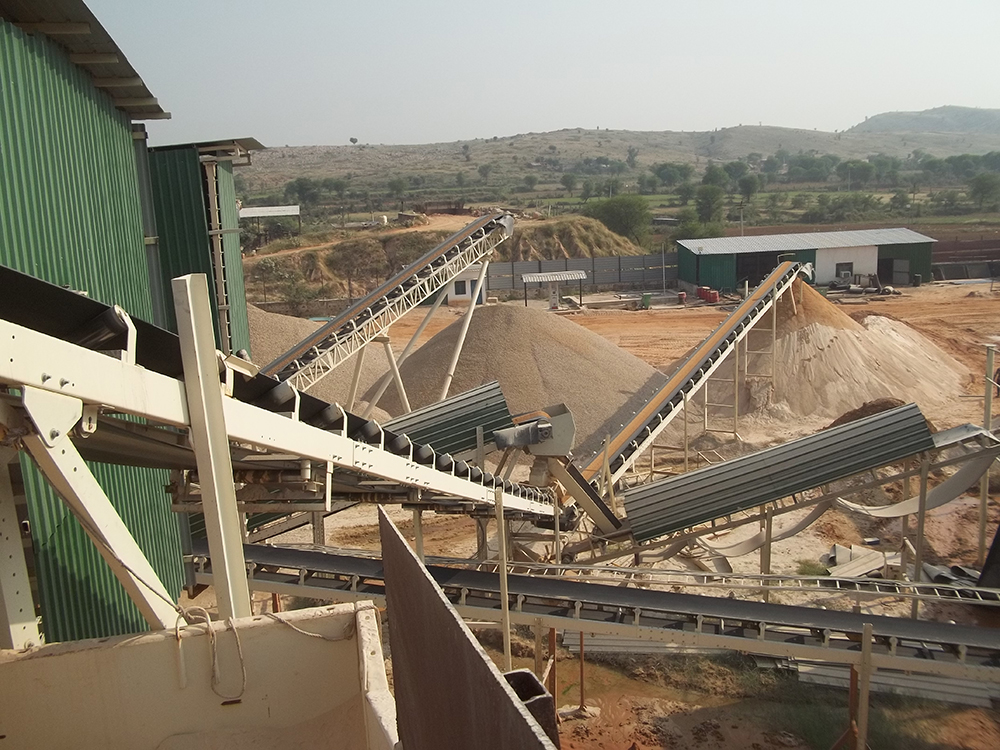
LSC Infratech (LSC) managing director Shiv Kumar says it has always been his company’s “quest” to incorporate the best plant technology and operating processes into its building materials production, with the cutting-edge set-up at Manoharpura the latest example of this.
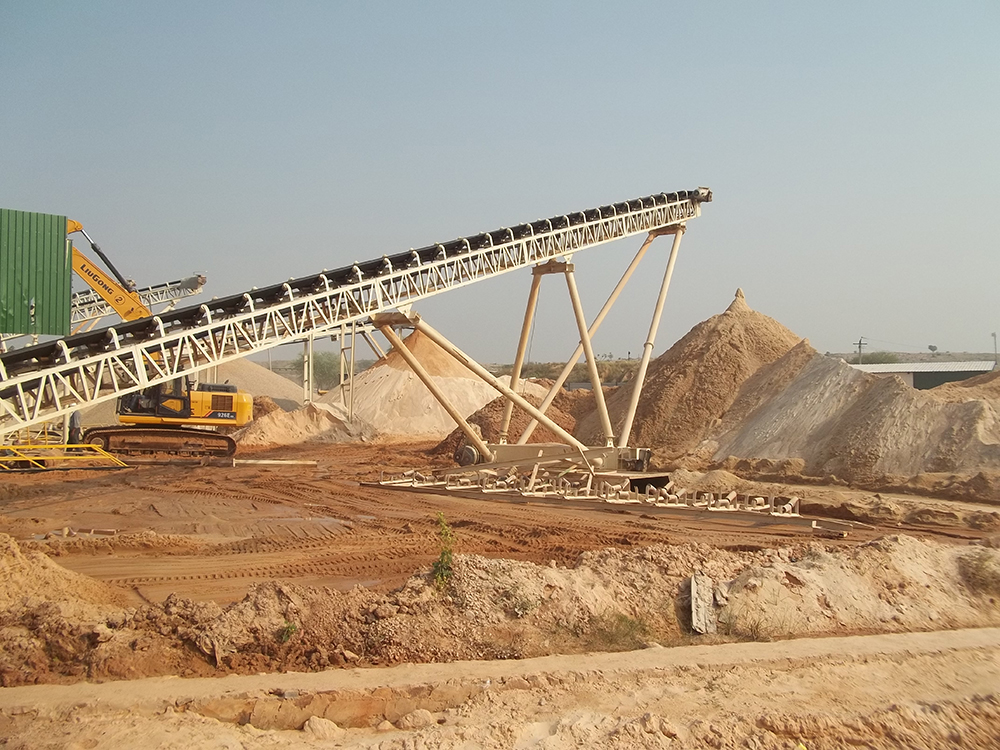
“It enables us to run the plants with minimal levels of redundancies and the highest level of optimised operation, while allowing us to derive a wide variety of materials,” he explains. “We have been able to do this with our own critical engineering research in getting the exact desired technologies from OEMs [original equipment manufacturers]. This has been the case since 1991 when we set up our first plant at Haldwani in Uttarakhand with toggle jaw, roller and impact crushers.”
Kumar says the advanced technology and automation-led plant set-up at Manoharpura has been realised through “sizeable” capital investment in a facility initially established to focus on silica sand production. He continues: “One of the key elements of the facility is systems installed to ensure there are minimal equipment break downs resulting towards very high levels of plant availability. We have also made sizeable capital investments in bringing newer operating and most importantly, maintenance process interventions. This is helping us to run the individual plants producing aggregates, manufactured and silica sand efficiently and generate profits in the highly competitive Indian crushing business.”
LSC has another two facilities in Rajasthan. One is at Ghatri at Bharatpur and Kotki near Ghatri. The Ghatri facility also produces crushed aggregates, silica sand and m-sand.
The company’s impressive new facility has a 50tph silica sand production plant, producing 13,000-15,000 tons/month of silica sand. This volume caters for the rising demand of North Indian glass manufacturers. Manufactured sand production from the plant is 20,000 tons/month.
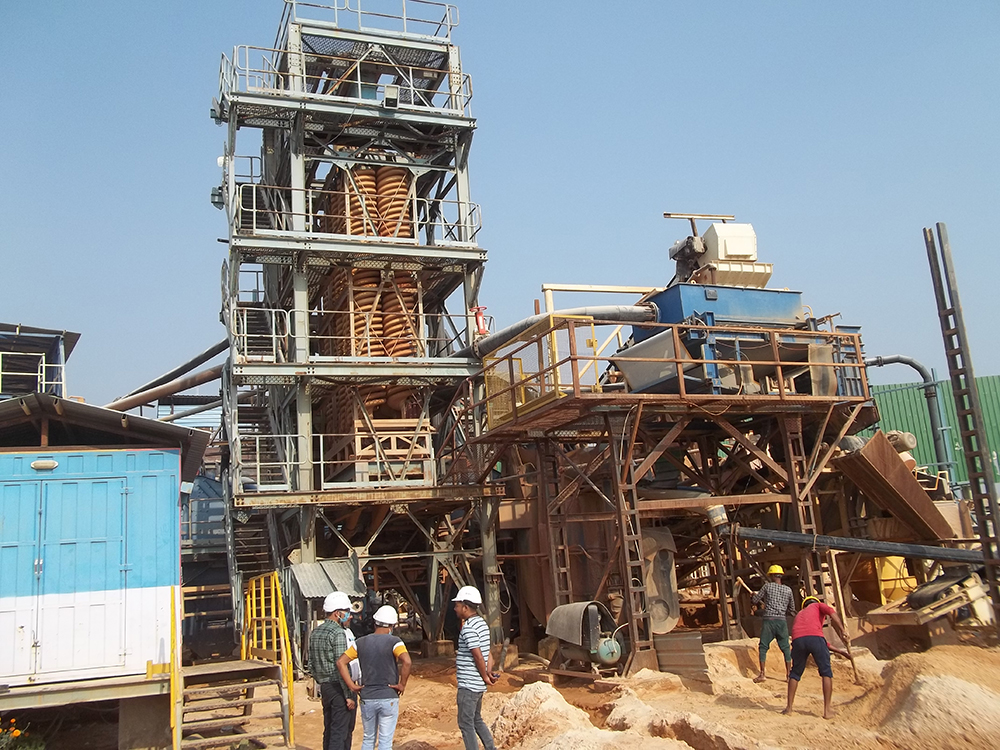
The Manoharpura facility is also home to a 250tph crushing and screening plant. The set-up comprises a primary unit of a grizzly feeder, an AVJ 811 jaw crusher, a QM 250 cone and secondary crushers, and 2060 three-deck screeners. The entire plant is from Propel Industries (Propel), the Coimbatore, southern India-based crushing, screening and manufactured-sand-equipment heavyweight. The crushing and screening plant produces between 35,000-40,000 tons/month of aggregates. The first set of screens feeds to a stockpile off its conveyors. The cone crusher produces 10-20mm crushed aggregates and cone dust. The jaw produces 40-65mm of aggregates. 0-5 mm materials are sent from screens to an allmineral Asia (India) silica sand plant for producing both silica and manufactured sand.
To reduce operating costs, the new facility has two grizzly feeders, placed one after the other, followed by a jaw crusher. According to Sushil Chauhan, head of plant operations, maintenance & projects at LSC Infratech, Manoharpura’s Propel crushing and screening plant is a unique combination and at the forefront of Indian crushing and screening sites. “It has been successfully engineered by Propel, based on our own engineering inputs to cater our operational requirements. The objective to have two grizzly feeders is to rationalise the load on the single motor of jaw and cone crushers, for enabling the crushing units to do optimum levels of crushing. This is because the raw materials sourced by us for producing aggregates, silica and manufactured sand comprises both boulders, generally of 500mm, and ores.” He continues: “Using appropriately sized feed materials leads to much less wear and tear on the machine parts, reducing our maintenance costs.”
Rakesh Kumar, another senior figure at LSC Manoharpura’s facility, adds: “The uniqueness of the new Propel [QM 250] cone crusher is that the single cone crusher can be operated both for getting aggregates and fines involving cone dust. This can be done through simply altering the close-side setting. Getting the two products otherwise would have required two sets of individual cone crushers, leading to higher operating expenses.”
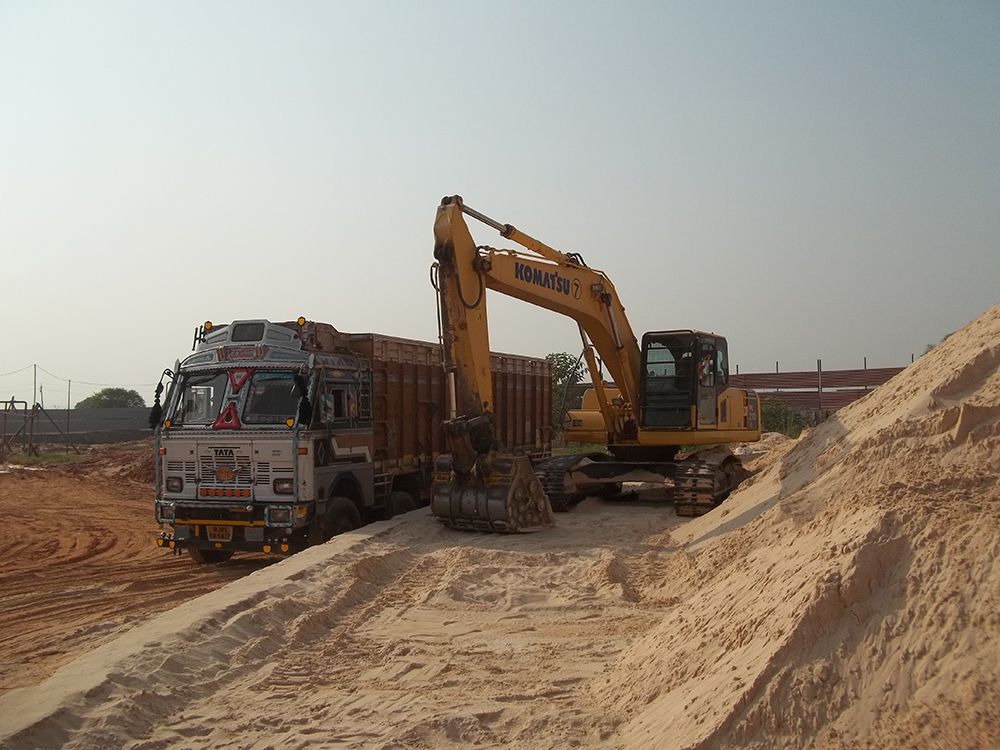
The compact design of LSC’s Manoharpura plant setup allows for operating flexibility while also cutting production costs. An example of the plant’s flexibility is its swivelling wheel-mounted conveyors. There are two swivelling conveyors, one connected to transport the manufactured sand throughput and the other, silica sand. The conveyors are driven by independent motors which stack the output in the stockyard. As compared to a static conveyor, the swivelling conveyor can be rotated across the entire stockyard. “The swivelling conveyors allow us to move wheeled loaders or excavators to either end of the yards, having the materials ready to completely load the Indian wooden-bodied trucks or the rigid dump trucks. This also facilitates in turn quicker dispatch of the materials to our customers,” explains Kumar.
LSC’s Manoharpura facility also uses a Tata Hitachi wheeled loader, and a Liugong wheeled loader. The site also uses two L&T Komatsu 2108 21-ton excavators and two Liugong 926E 26-ton excavators with 1.9m³ bucket. The excavators and wheeled loaders are used to load the crushed aggregates, manufactured sand and silica sand to the rigid dump and conventional wooden-bodied trucks.
High levels of plant availability, safety and attainment of the rated output are supported by Propel’s complete automated control system for running the entire crushing, screening, and conveying setup. The system shows the complete plant layout on a control panel, with digital electronic descriptions of all the units, for running the crushing and screening plant.
Chauhan says: “Through the automated control system, the variable frequency drives can be pre-set and the RPM controlled. This can be set depending on the volume and size of the materials being processed by the plant. Through controlling the frequencies, in the jaw and cone, we are able to ration power use and save on its consumption.”
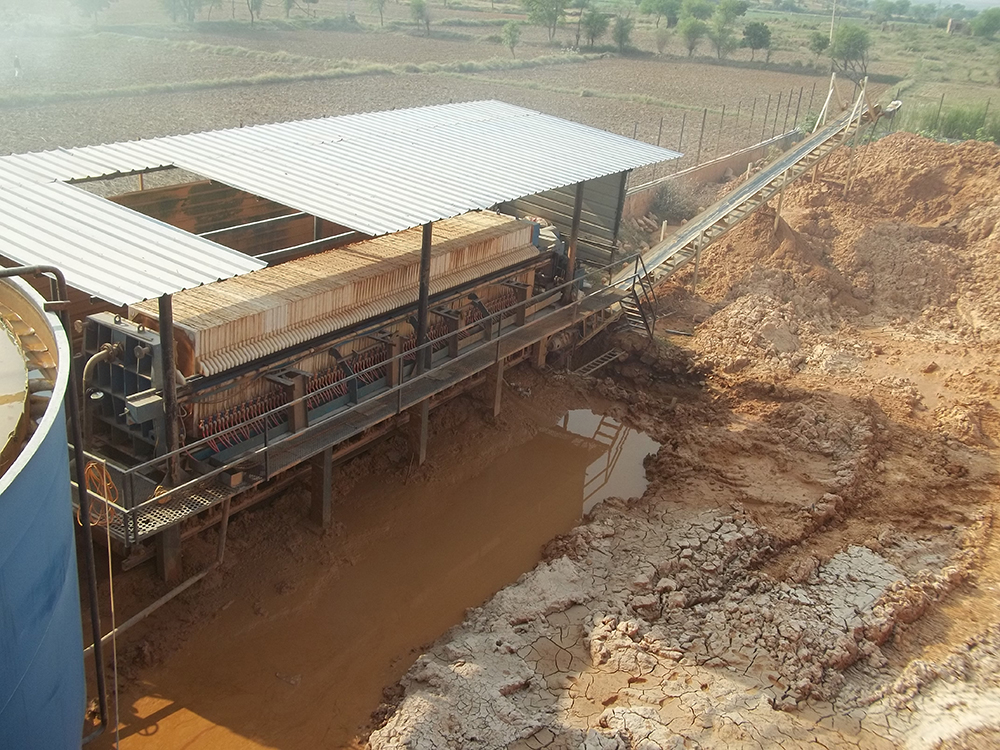
Among the vital safety attributes of Propel’s automated control system is its emergency shut off switch. The switch, once activated, can bring plant operations to a halt if any faults or safety lapses are detected. The panel also possesses relays that will trip automatically and suspend operations if there is overloading of materials in the processing operation. There are also circuit breakers that will trip automatically if they detect electrical cable faults, short circuits or earth faults, which may endanger operating personnel on the plant site. For additional safety, there are safety switches on the foot of each conveyor. The switches can immediately be activated if any lapses in safety are detected.
While advanced levels of technology are a big factor in keeping operation costs low at the LSC Manoharpura facility, newer plant operating practices are another cost-cutting facet. LSC plant officials are ensuring that crushing and screening plants are run with full material loads. Plants previously run with lesser loads had increased production costs.
The Manoharpura facility uses between 800-900 amperage a month. Power for running the plants is sourced from Rajasthan State Electricity Grid. The unit consumption of electricity is between 240,000-250,000 units. Power for operating the plant is through 33kva grid power. LSC has put in place 650kva stabilisers that can ensure consistency in voltage if there any fluctuations in the voltage from the grid source, which is not unnatural in Rajasthan.
Running the facility with multiple trains for mineral processing with electricity is cheaper for LSC compared to running the site off diesel generators. A 200kva generator would lead to diesel consumption between 100-110 litres/hour. The high cost of diesel fuel would have made this commercially unviable.
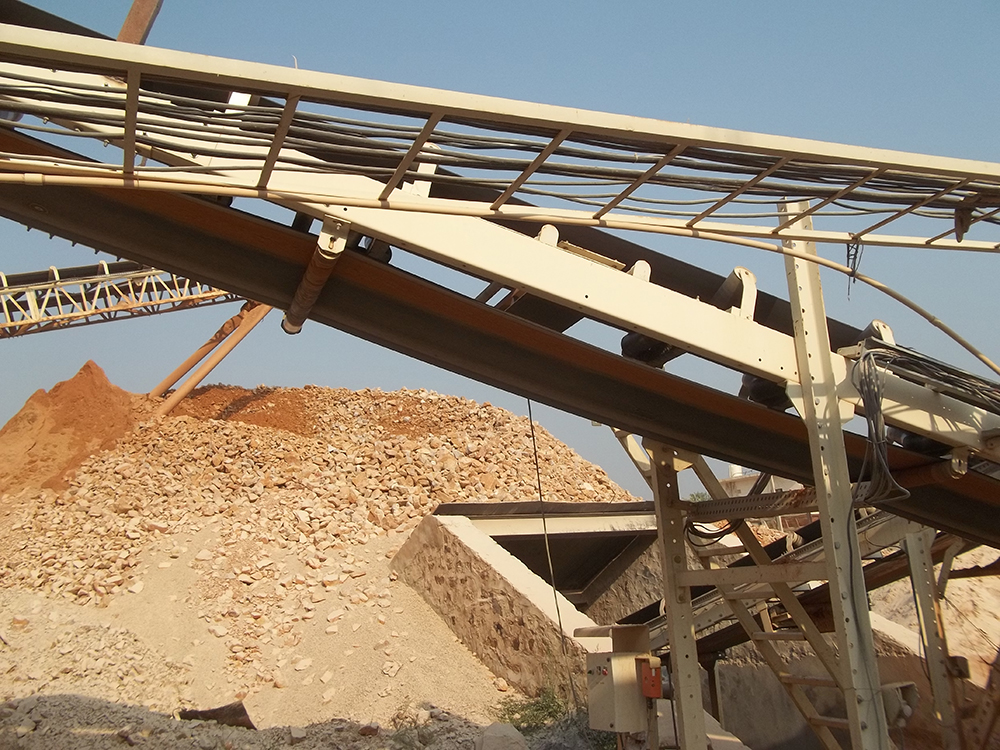
To ensure that there is a constant feed of raw materials for running the plants with a full load, adequate volumes of raw materials are kept at the facility’s stockyard. This negates any disruptions in supplies that may occur while transporting the raw materials from LSC’s mines at Kumar Harbals, five kilometres away from the Manoharpura plant.
LSC has taken on lease 23 hectares of mining area with estimated accessible reserves of 40 million tons. The plant’s current production output is 1.34mn tons per year (including silica sand, manufactured sand and crushed aggregates), with LSC planning to increase its production capacity by a further 100,000 tons/year in 2023. The company is awaiting environmental clearance from the Rajasthan government. If approval is granted, LSC will have enough mineral reserves at Manoharpura for the next 20 years of production.
To get maximum output from the reserves, LSC follows higher levels of scientific and safety processes for extracting the rock materials. Controlled deep-hole blasting is done to get the materials with the right hole measurement so there is minimal rock wastage. Rocks won through blasting are then initially reduced in size by hydraulic rock breakers and jack hammers attached to excavators. The broken materials are then loaded by excavators with 2.4-2.6m³ bucket attachments on to LSC’s rigid dump trucks for transporting the materials to the crushing and screening plant.
Rohit Kumar, LSC’s senior geologist, says: “The materials used for blasting at Kumar Herbals are fully certified by India’s Directorate General of Mines (DGMS). The personnel carrying out the blasting work are also DGMS-certified.”
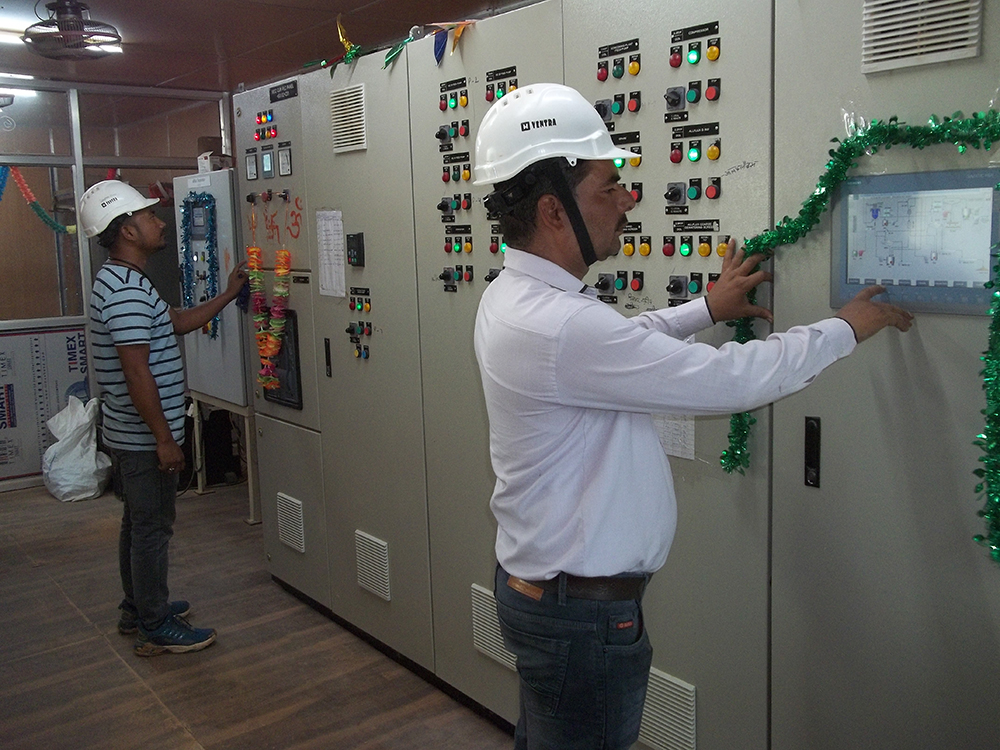
To ensure the steady supply of raw materials from Kumar Harbals to the new plant, LSC has acquired four new Tata 40-ton 3525 rigid dump trucks (RDTs) with BS-VI-emission-norm-based electronic engines. It has also acquired one BS-VI variant Tata 2825 RDT with box body.
According to Anil Sharma, transport manager at the LSC Manoharpura facility, the Tata RDTs were purchased partly due to the very good on-site product support from the Rajasthan-based Tata dealership. Their perceived higher productivity against competitor trucks was another important purchase consideration. “The trucks can haul more volumes of materials across long distances with faster cycle times and higher levels of fuel efficiency with the BS-VI electronic engines. This makes the unit costs of the transportation cheaper for us,” explains Sharma.
He adds: “Another prominent attribute of the Tata trucks is that they can work on combined mode applications, while bringing up the mined materials to the surface before moving it on road. The trucks can also haul the materials on undulated sites with ease, with minimal breakdown. The additional axle between the front and rear wheels ensures easy turning of the trucks at shorter radius.”
“The only higher operating expenditure incurred in the trucks is through the separate exhaust gas treatment oil. For every 100 litres of diesel, the new BS-VI-equipped trucks require seven litres of diesel exhaust gas treatment oil. This makes the trucks completely environment friendly. Environment friendliness is also achieved by a new nozzle pipe design, which releases the exhaust gas from the top. Overall, the higher operating costs for the exhaust gas treatment are compensated by the high levels of productivity and fuel efficiency of the trucks.”
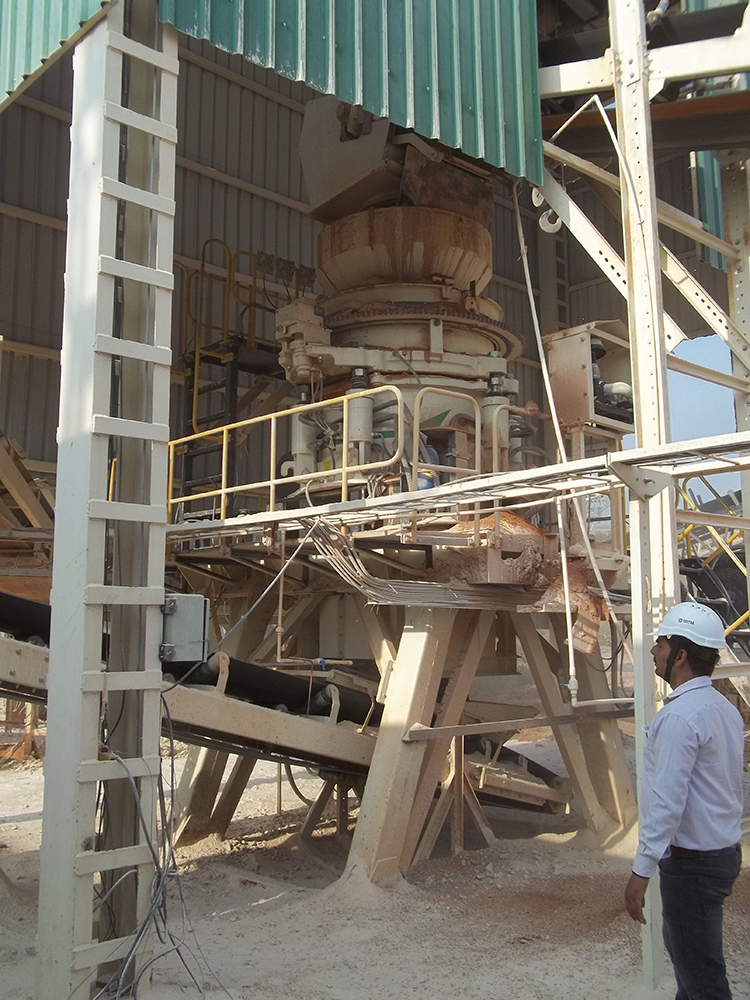
Vying in a competitive field to be the star attraction at LSC’s state-of-the-art Manoharpura facility is the allmineral Asia (India) silica and manufactured-sand-processing plant. Chauhan says: “The plant delivers highest-purity silica sand that is strictly required by the glass industry. This is essentially achieved through the single-pressure mechanism of the plant, which delivers pressure from bottom to top in contrast from top to bottom with a dual-pressure classifying system. While the bottom pressure ensures that the impurities and the other light particles are on top, it also reduces power consumption.”
The allmineral Asia (India) silica and manufactured-sand-production plant is highly automated via two HMI-operated electronic panels inside ‘shipping container’ control cabins. One HMI panel sets the working pressure required for segregating the impurities from the silica sand and manufactured sand from the all-flux systems. The chosen pressure setting takes into consideration the chemical analysis pinch-value of the materials from LSC’s laboratory at the Manoharpura plant. The other HMI panel with pinch-value controller assists in selecting the plant’s operating mode, including, among others, maintenance mode, automated mode, and without-speed mode.
To have uninterrupted HMI functioning, programme logic controls and variable frequency drives, LSC has installed a battery backup to bypass power disruptions. Furthermore, a protective, switch-mode power supply system (SMPS) from Siemens is also installed. The SMPS filters the negative voltage, that may come from the power-grid connection and harm the control systems. All the electrical control systems of Manoharpura’s allmineral Asia (India) and Propel’s plants are SCADA (supervisory control and data acquisition)-based.
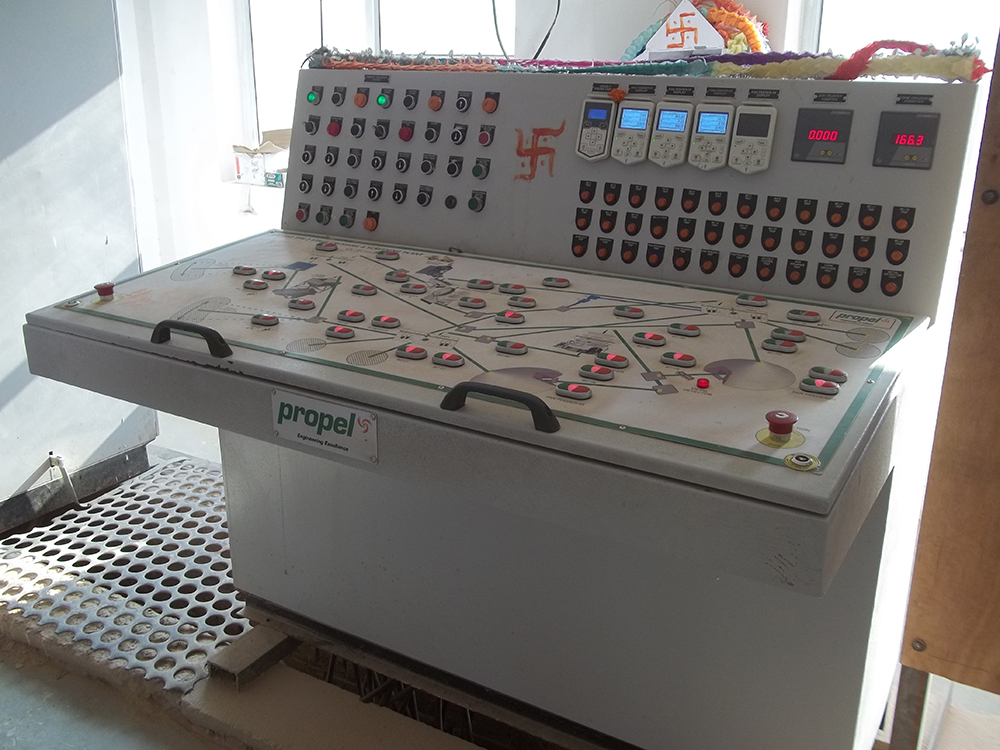
Another major attraction of LSC’s new plant is the Amar Plastics India filter press used to eliminate water wastage. The filter press is connected to the silica-sand-processing plant, separating the water from the slurry generated during production. Through separating the water from slurry, hardened ‘cake’ material is obtained. LSC Manoharpura is looking to sell the hardened materials to companies engaged in landfill works.
LSC’s Manoharpura facility also has its own dedicated workshop to do maintenance work on the site’s wheeled loaders, excavators, and rigid dump trucks. LSC also undertakes comprehensive preventive and predictive maintenance practices to optimise its plants’ uptime, including regular checks of the electrical systems and cable connections supporting the plant. It is vital to ensure that cable connections are not loose and do not overheat, especially when operating in the summer months. Regular maintenance is done by cleaning dust from the contactors of the PLC (programmable logic controller) systems and the variable frequency drive.
Given its advanced technology-enabled thoroughness and impressive cost-saving features, it is unsurprising that LSC Manoharpura facility is attracting great attention in the Indian aggregates, silica and manufactured sand sector.








